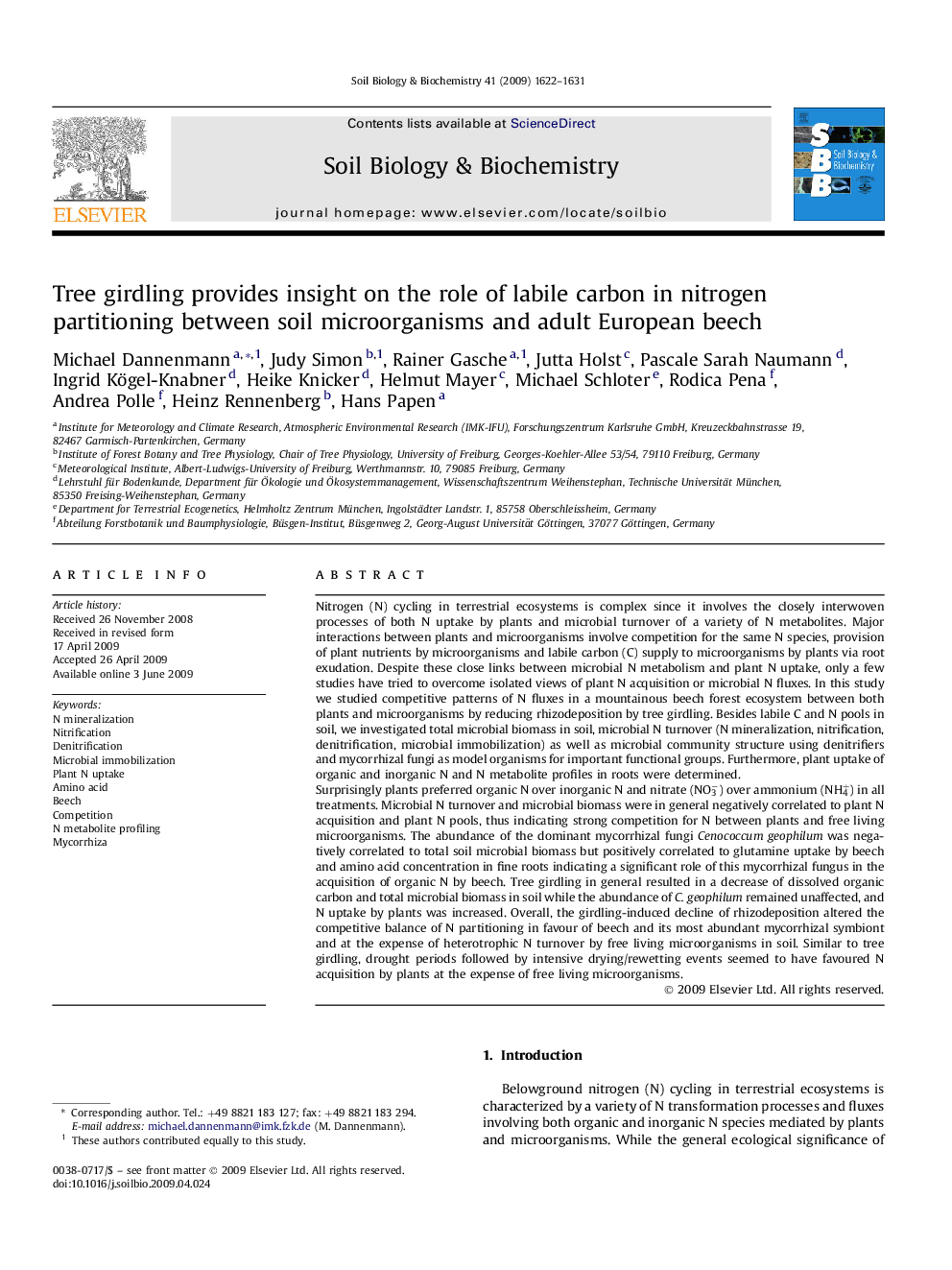| Article ID | Journal | Published Year | Pages | File Type |
|---|---|---|---|---|
| 2026378 | Soil Biology and Biochemistry | 2009 | 10 Pages |
Nitrogen (N) cycling in terrestrial ecosystems is complex since it involves the closely interwoven processes of both N uptake by plants and microbial turnover of a variety of N metabolites. Major interactions between plants and microorganisms involve competition for the same N species, provision of plant nutrients by microorganisms and labile carbon (C) supply to microorganisms by plants via root exudation. Despite these close links between microbial N metabolism and plant N uptake, only a few studies have tried to overcome isolated views of plant N acquisition or microbial N fluxes. In this study we studied competitive patterns of N fluxes in a mountainous beech forest ecosystem between both plants and microorganisms by reducing rhizodeposition by tree girdling. Besides labile C and N pools in soil, we investigated total microbial biomass in soil, microbial N turnover (N mineralization, nitrification, denitrification, microbial immobilization) as well as microbial community structure using denitrifiers and mycorrhizal fungi as model organisms for important functional groups. Furthermore, plant uptake of organic and inorganic N and N metabolite profiles in roots were determined.Surprisingly plants preferred organic N over inorganic N and nitrate (NO3−) over ammonium (NH4+) in all treatments. Microbial N turnover and microbial biomass were in general negatively correlated to plant N acquisition and plant N pools, thus indicating strong competition for N between plants and free living microorganisms. The abundance of the dominant mycorrhizal fungi Cenococcum geophilum was negatively correlated to total soil microbial biomass but positively correlated to glutamine uptake by beech and amino acid concentration in fine roots indicating a significant role of this mycorrhizal fungus in the acquisition of organic N by beech. Tree girdling in general resulted in a decrease of dissolved organic carbon and total microbial biomass in soil while the abundance of C. geophilum remained unaffected, and N uptake by plants was increased. Overall, the girdling-induced decline of rhizodeposition altered the competitive balance of N partitioning in favour of beech and its most abundant mycorrhizal symbiont and at the expense of heterotrophic N turnover by free living microorganisms in soil. Similar to tree girdling, drought periods followed by intensive drying/rewetting events seemed to have favoured N acquisition by plants at the expense of free living microorganisms.
